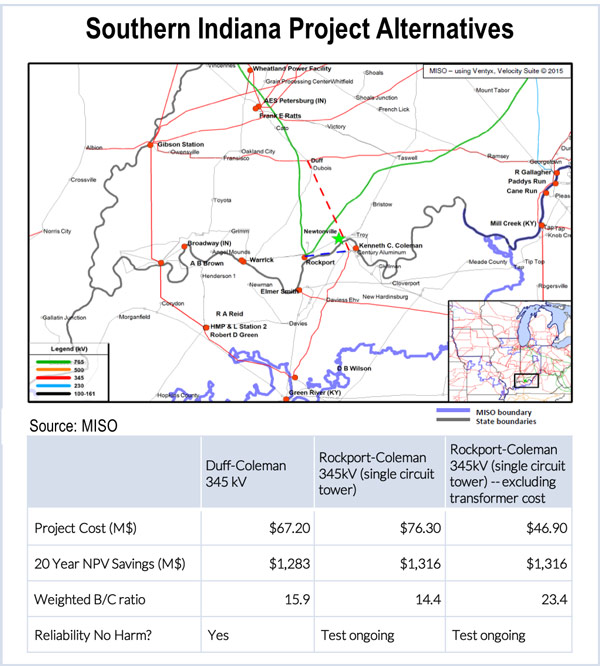Well, that didn’t take long.

WEC Energy Group, formed after Wisconsin Energy purchased People’s Gas parent Integrys Energy Group, said that Jacobs Engineering Group was no longer in charge of the accelerated gas main replacement project. It shouldn’t come as a surprise, though. One of the conditions the ICC placed on its approval of the acquisition was a promise that WEC take firm control of the problem-plagued project.
When the project was first unveiled in 2009, Peoples said the cost of replacing about 2,000 miles of pipe over 20 years would be about $2.2 billion. The ICC approved a customer surcharge to finance the replacements. The cost estimate then went up to $2.6 billion, and then $4.6 billion. When the ICC sought more information in June from Peoples’ management, top managers called before the commission were unable to provide any firm guidance. That management team has since largely been replaced.
More: Crain’s Chicago Business
Wildfires, Market Shifts Cutting Rail Traffic to Delaware Refinery

Nimbley said North American crude oil — the type it receives by rail from the Midwest and Canada — has become too expensive compared with crude it can receive by water from other sources. “Factoring in transportation costs, it is plainly evident that these barrels cannot find an economic home on the East Coast, or a lot of other places” at current price levels, Nimbley said during a conference call with analysts.
Nimbley said rail deliveries could continue to fade, to 45,000 to 50,000 barrels per day, if the same market conditions persist. “We buy our crude basically two to three months early, so the crude we’re running in the third quarter is based on prices that exist in the second quarter, and those prices did not support rail economics,” Nimbley said.
More: The News Journal
Elon Musk’s SolarCity now has 250,000 Customers

SolarCity also said it produced 1.25 TWh of energy in the quarter. Through the end of the quarter, the company had installed 1,418 MW, an increase of 86% over the same period in the previous year, and said it had a total of 262,495 customers. The company said favorable regulatory rulings in California and Arizona contributed to its success.
More: Greentech Media
Duke Energy Progress Completes NCEMPA Asset Purchase

The sale gets NCEMPA out of the generation business. It has entered into a 30-year power purchase agreement with Duke.
More: Duke Energy
SunEdison: NASCAR’s Official Solar Partner

“Our strategic partnership with SunEdison will help NASCAR further reduce the sport’s environmental impact and help continue to educate our fans on renewable energy,” said Steve Phelps, NASCAR’s chief marketing officer.
NASCAR says a study it commissioned in 2014 found that four out of five NASCAR fans believe the earth is going through a period of climate change, and that two out of three of those fans feel a personal responsibility to do something about it.
More: The St. Louis Post-Dispatch
Xcel Energy Supports Large-Scale Solar Projects

Xcel Energy CEO Ben Fowke said last week that the Minneapolis-based utility supports development of large, attractively priced solar power projects, but it will keep pushing to limit more costly rooftop and subscriber-based community solar gardens. Xcel recently won approval from Minnesota regulators to develop its first three utility-scale projects in the state, the largest of which will generate 100 MW.
Fowke said recent studies have confirmed that large solar development “is far more cost-effective for consumers than smaller applications” and solar policy needs to be based on “sound economics.”
“While solar gardens and rooftop solar have a place in our portfolio as an option for consumers, because they require heavy, heavy subsidization of non-participants, you’ll continue to see us advocate that the primary focus be utility-scale solar so that we can keep energy costs affordable for consumers,” Fowke said.
More: Minneapolis Star Tribune
AEP Texas Names New President, COO

American Electric Power has named Bruce Evans as the new president and chief operating officer of AEP Texas. He is replacing Wade Smith, who is now senior vice president of grid development for AEP Transmission. Evans was vice president of distribution operations for AEP Texas.
Evans has a bachelor’s degree in finance from Hardin Simmons University in Abilene and a master’s degree in finance from Dallas Baptist University. He also attended the Advanced Management Program at Harvard University. He has built his career in utilities, spending the first 21 years at West Texas Utilities, Central Power & Light, Central & South West and AEP. He was president and CEO of the former CPL from 1996 to 1998.
More: Alice Echo
Shell Starts First Arctic Well in Chukchi Sea

Shell is betting big on this Chukchi Sea attempt, but it is racing the clock as winter is already starting to bear down on the drill site. A previous attempt had to be halted when an iceberg drifted toward a drill ship in 2012.
But Shell said it is committed to this year’s attempt, and for good reason. The Arctic prospect “has the potential to be multiple times larger than the largest prospects in the U.S. Gulf of Mexico, so it is huge,” CEO Ben van Beurden said. But its potential is also far off. “If, indeed, we do find oil, and if we find an acceptable path to develop it, it will start to produce in 2030,” he said.
More: Associated Press; FuelFix
EDP Renewables Planning to Build 250-MW Wind Farm in Maine

EDP is proposing to build a 50-mile transmission line to connect the project to the regional power grid. In order to quiet opposition, EDP has already promised up to $2 million in energy efficiency projects for area residents and businesses.
More: Bangor Daily News
Clean Line Energy Asks Missouri PSC to Reconsider Nixed Project

“The project is too important to Missouri’s energy future not to pursue,” a company official said. The transmission line would run from Dodge City, Kan., across Missouri, through Illinois, to a substation in Indiana. Three of the commission’s five members voted against the project, questioning whether the line was needed to help Missouri meet its renewable energy mandate by the 2021 deadline.
More: Kansas City Star
UIL Invests in Northeast Energy Direct Pipeline
UIL Holdings will invest $80 million in the Northeast Energy Direct natural gas transmission line project being proposed for New York, Massachusetts and New Hampshire. The investment will give UIL a 2.5% ownership stake in the pipeline project proposed by Kinder Morgan. Plans call for the natural gas transmission line to extend 188 miles from upstate New York, through western Massachusetts and southern New Hampshire, before terminating in Dracut, Mass.
Construction of the $3 billion project is expected to start in 2017, with the pipeline becoming operational in November 2018. Northeast Energy Direct is part of a larger, 412-mile project that would bring natural gas from the Marcellus Shale deposits of north-central Pennsylvania to the population centers in southern New England.
Michael West, a UIL spokesman, said the company’s deal with Kinder Morgan gives it the opportunity to purchase an even larger ownership stake in the transmission line project.
More: New Haven Register














